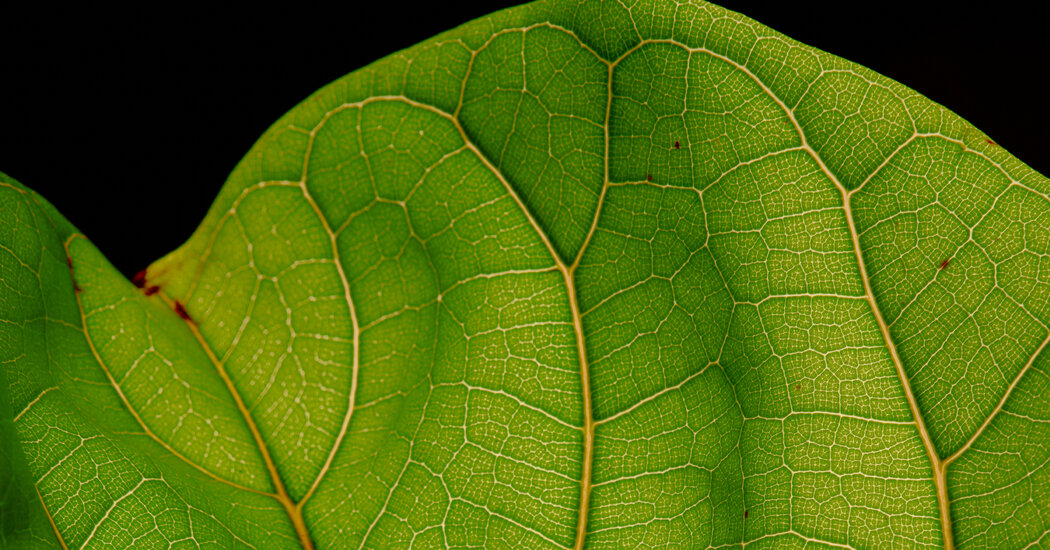
“The ‘It’ plant is the quest,” said Katie Dubow, the president of Garden Media Group, a public relations firm that advises companies on market trends. “Everybody wants to have it, grow it, sell it.”
People’s relationships with their plants deepened during the pandemic, industry experts say, and once trendy varieties started to seem dusty. Former “It” plants like the pilea peperomioides, with its coin-shaped leaves, and the fiddle leaf fig, a fixture of home design catalogs, have been bumped out of vogue. (The fiddle leaf “got a bad rap” in part because it is harder to care for than it looks, explained Christian Esguerra, an influencer who posts under the handle “crazyplantguy.”) The raven zz had a moment, the philodendron birkin was coveted briefly, and the pink princess is on its way out.
Now, instead of one plant that everyone wants, dozens are popular. The National Garden Bureau declared 2022 the year of the peperomia, but fans are also craving alocasias, anthuriums, calatheas and hoyas of all kinds.
Variegated monsteras with stripes or blotches of color like the Thai constellation, known for its yellow and white splattered leaves, and the monstera albo, beloved for its white paint-like patches, have remained in demand, in part because certain botanical qualities make them difficult to propagate.
On eBay this month, a five-leaf Thai constellation plant sold for $600 and a five-leaf cutting of a monstera albo went for $500. Costa Farms, which has been trying to grow its own version of the Thai constellation for several years, recently released a limited supply of the plants at Walmart — priced at about $600 each for a 12-inch pot — and sold out quickly. (Proceeds went to charity.)
The look has also evolved. Popular plants now are often variegated with big, highly textured, angular leaves that are frequently pink or purple. And when displayed, instead of a singular statement plant posted in a window, they’re often grouped together in a corner like a jungle or packed into a growing case.




